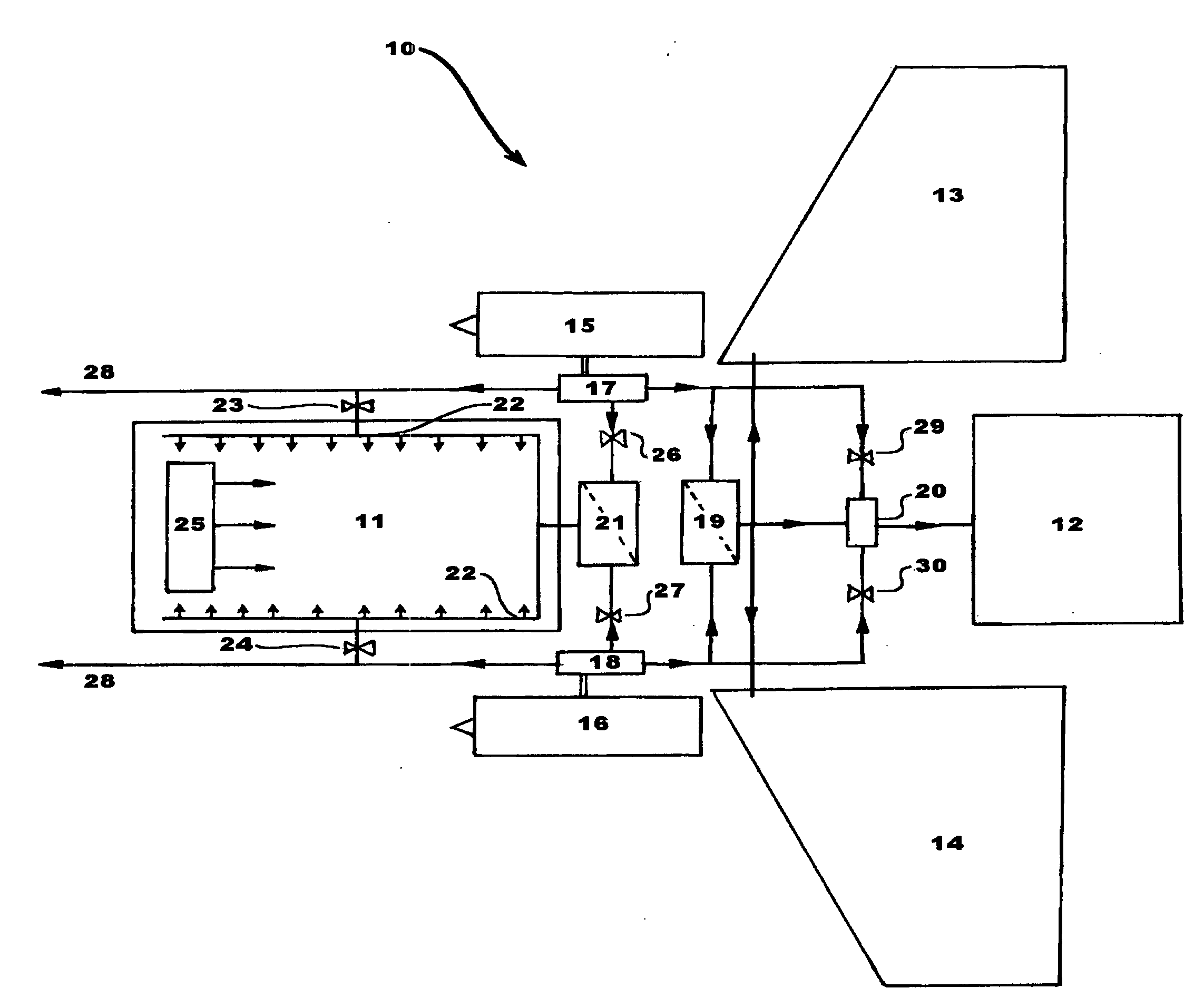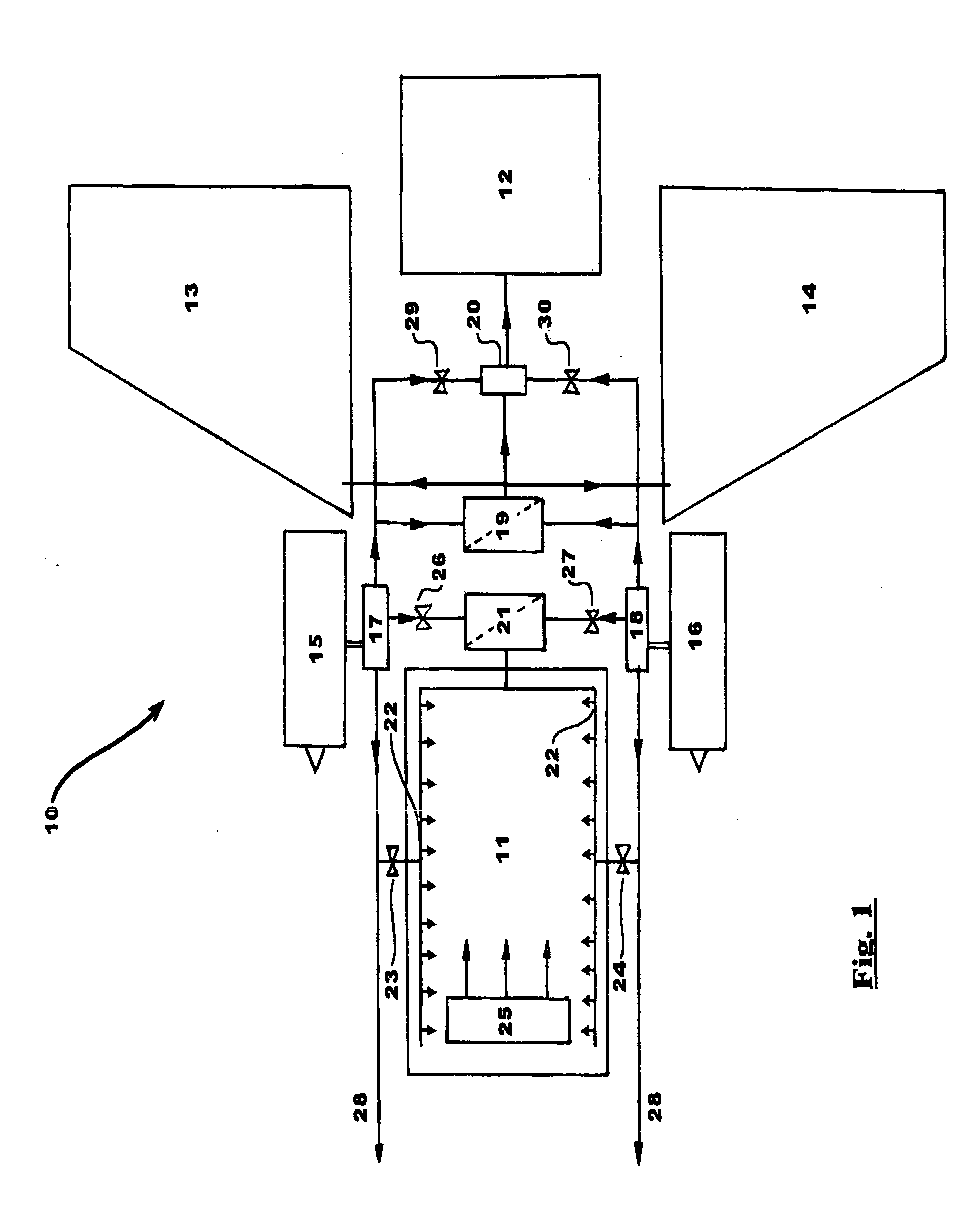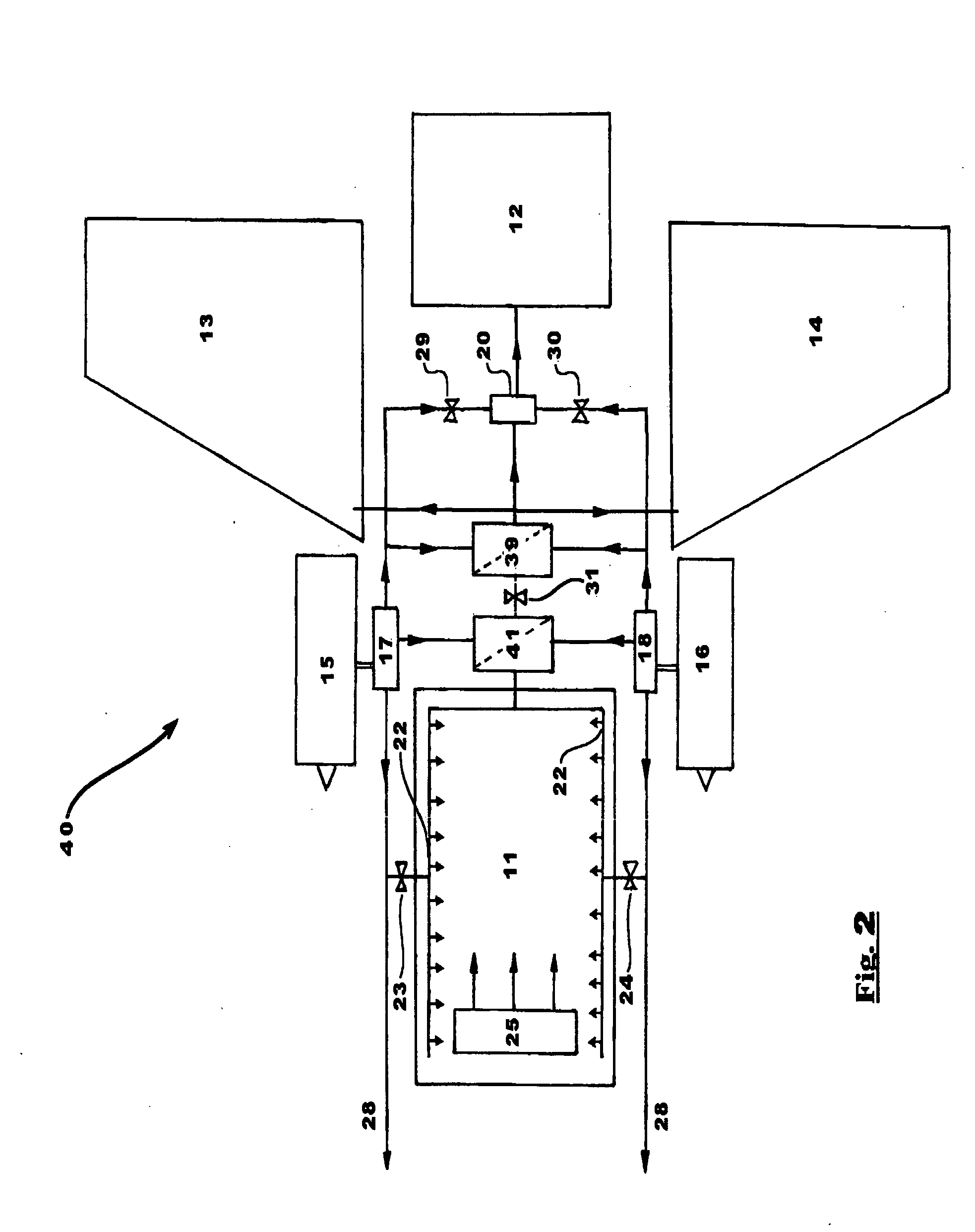Hypoxic aircraft fire prevention and suppression system with automatic emergency oxygen delivery system
a technology of automatic emergency oxygen delivery and aircraft fire prevention, which is applied in the direction of combustion type, heating type, separation process, etc., can solve the problems of insufficient ventilation in enclosed compartments, lack of proper fire fighting and fire prevention equipment, and death of most victims of carbon monoxide,
- Summary
- Abstract
- Description
- Claims
- Application Information
AI Technical Summary
Benefits of technology
Problems solved by technology
Method used
Image
Examples
Embodiment Construction
[0029]This reliable and low-cost solution will allow designing and building fire safe aircraft and is particularly valuable by allowing converting most of existing passenger airplanes into a fire-protected aircraft.
[0030]FIG. 1 shows a schematic view of the system 10 integrated into different compartments of an aircraft: cabin 11, cargo compartment 12 and fuel tanks 13 and 14. All aircraft components are shown schematically and may vary depending on the aircraft type.
[0031]Bleed air supplied by engines 15 and 16 is constantly delivered, via distributors 17 and 18, into the ventilation piping 22 of the cabin 11, air-separation module 19 with mixing device 20 and other technical systems and navigation instruments through the supply lines 28.
[0032]The air separation module 19 utilizes pressure and the flow of the bleed air for separating it into an oxygen enriched air (OEA) and hypoxic or oxygen depleted air (ODA). ODA is different from nitrogen enriched air (NEA) used in some industri...
PUM
 Login to View More
Login to View More Abstract
Description
Claims
Application Information
 Login to View More
Login to View More - R&D
- Intellectual Property
- Life Sciences
- Materials
- Tech Scout
- Unparalleled Data Quality
- Higher Quality Content
- 60% Fewer Hallucinations
Browse by: Latest US Patents, China's latest patents, Technical Efficacy Thesaurus, Application Domain, Technology Topic, Popular Technical Reports.
© 2025 PatSnap. All rights reserved.Legal|Privacy policy|Modern Slavery Act Transparency Statement|Sitemap|About US| Contact US: help@patsnap.com



